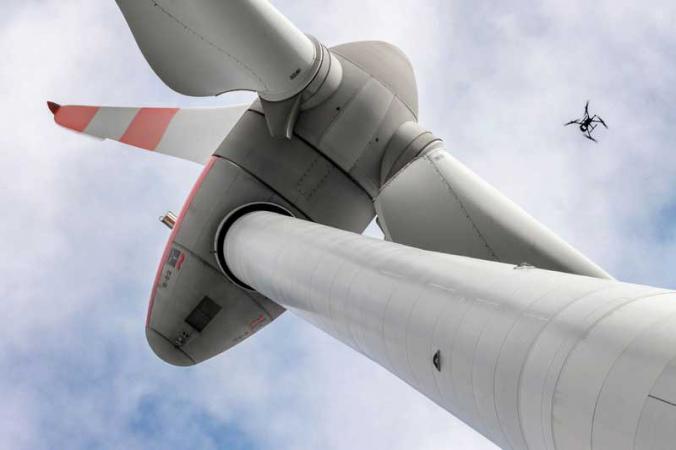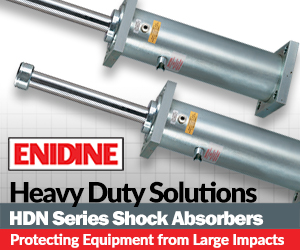Dispelling the Legends of Maintenance Management
There are many legends surrounding maintenance management in plants. Often, the legends aren’t true, but people live with them because it is simply convenient or so ingrained that they don’t even realize it’s a legend. Plants must break the legends that exist in their organizations to gain improvements in equipment reliability and maintenance management. Some of the legends will be addressed in this article. You might become uncomfortable when you realize some of the legends are embedded in your organization.
Legend 1: Maintenance cost must be reduced quickly
Plants should reduce maintenance cost but how you go about it will either improve your equipment reliability or create problems further down the road. Maintenance cost cannot be reduced quickly because it takes time to improve equipment reliability. Improved reliability will reduce cost, but the reduced cost will not improve reliability.
You can cut maintenance costs in any plant in the world very quickly by 40%. You simply get rid of some people and stop doing certain maintenance tasks. If you get the opportunity to take a job like this, don't plan on staying for more than a year. The consequences of short-term maintenance management will most likely be devastating to the total cost, and problems will start to show after a year or two due to ill-maintained assets.
If we lower the maintenance budget and don't change other aspects of the business practice, the results will most likely be very poor.
Changes in maintenance cost are inter-related to product quality and production output. A reduction in maintenance cost will not lead to improved quality and production output. However, an improvement in equipment reliability will most likely improve production output and quality. Improved quality and production output will reduce maintenance cost.
Legend 2: People don't like change
I often hear that people don't like change. In my experience, people don’t mind change — they just don't want to be changed by someone else. People are often very receptive to change as long as they are part of the process. The problem is when a project improvement plan goes through the usual number crunching; the involving the people is forgotten.
For example, most plants can identify planning and scheduling improvement opportunities, yet most of us are reactive by nature; we don't want to work to strict guidelines, such as plan and schedule exactly what to do three days from now. Improving planning and scheduling requires a culture change together with detailed, agreed- upon processes and procedures. Even though we know this, plants sometimes try to improve planning and scheduling by talking over a cup of coffee, or at best sending a couple of planners to a two-day planning and scheduling course.
Production and operations changes are often 80% to 90% dependent on technical solutions including process automation. An equipment reliability and maintenance change initiative are 95% dependent on changing peoples' behavior. Management must address the issues of involvement and acceptance while encouraging the few enthusiastic souls in a project. Project success can be expressed as R = Q x A x E (Results = quality of actions x acceptance for change x enthusiasm for a change).
Legend 3: People are our biggest asset
It is politically correct to say, "people are our biggest asset." Most managers would agree with that statement. I don't. People are not a company's biggest asset —the right people are a company's biggest asset, and the wrong people are liabilities.
I confirmed this opinion during a seminar for a group of supervisors and craftspeople. One discussion started with the question, "Isn't it true that if any given crew in this plant would lose its poorest performing people (about 10% to 20% of the total), the loss would hardly be noticed?" After the laughs and pointing had subsided, several people confirmed that there were always a number of people in any given crew who had "never accomplished an honest day’s work." These people destroy morale, and in some cases, even slow the rest of the crew down.
Management must deal with underperforming people. If you have a decent relationship with your union or your nonunion workforce, they are usually receptive to discussing these matters. Poor performers are a big problem for them as well. Another consideration you must understand is if your work system is not effective your people won’t be effective either. Management can minimize the amount of wasted time and energy by implementing good maintenance and reliability processes.
Legend 4: Having more maintenance people on shift reduces downtime
If you have lots of problems in your plant, operations might request more people on shift to fix the breakdowns. If this is the situation in your plant, you are going down the wrong path.
If you have a multitude of problems in your plant, you need to find out why and fix the source of the problems. What is the solution for your plant? Most likely you don't have enough time to repair all equipment problems found in your area, and you don't always find the problems before a breakdown. So we need more people, right? In the short run possibly but not necessarily and definitely not in the long run.
Here is a checklist of possible problems:
- Do operators perform detailed equipment inspections? If not, make sure operators know how to inspect a bearing, motor, coupling, hydraulic motor, fluid coupling, etc.
- Do your maintenance people have detailed inspection lists, take readings, and analyze trends in order to identify symptoms on equipment?
- Do you use your craftspeople by having well-planned jobs for them?
- Do you schedule maintenance jobs in coordination with operations?
By executing high-quality inspections, we can make sure that we know about most symptoms.
Legend 5: We can't motivate maintenance craftspeople to improve reliability because they make more money when things break down
Maintenance people typically do make more money when things break down. A perceived "Catch 22" by maintenance management is that crews can't be motivated to improve reliability and maintenance because higher equipment reliability will reduce the amount of overtime.
However, the answer to the question goes back to Legend 3. Only a minor percentage of people don't contribute as well as others; the rest of us want to be good performers. The key word is pride. Pride matters more than overtime pay. Pride drives a relatively low-paid U.S. Marine to risk his or her life for months at a time. Pride drives a maintenance craftsperson to spend an extra hour or two to align a pump to one-thousandth of an inch even though few will notice.
Management can instill pride in an organization by developing clear expectations for reliability and maintenance, and by training and supporting people long term in achieving these expectations. For example, develop a clear definition of preventive maintenance and develop an action plan and training initiatives on how to improve inspection routes, lubrication, cleaning practices, operating procedures, alignment, and other preventive maintenance practices.
Since money also is a motivator, provide incentive pay for equipment reliability. One of the fastest preventive maintenance program setups we have seen was at a car manufacturing plant in Europe that offered its crews (operations and maintenance) a bonus on each percentage over 97% line efficiency. The results appeared on reports just weeks after the announcement — the actual equipment reliability improvement probably started hours after the announcement.
Legend 6: New computer software (CMMS) will improve reliability and maintenance performance
It is not unusual to see a maintenance organization implement a new CMMS with the hopes that this computer software will improve plant reliability. In truth, new software can be a great help, but it is only a tool.
If plant performance improves following a software change, it is not the software itself that contributes to the majority of improvements. Improvements will be a synthesis of the implementation and execution of better work processes, behavior changes, and higher-quality data from the software. The obvious question then becomes, "Can't the plant improve work processes, behaviors, and data quality with the old CMMS?"
Sometimes maintenance software updates become so cumbersome that a plant disregards obvious fundamentals due to work overload. For example, the bill of material for equipment isn't always up to date in the old system, and it will not be up to date in the new system unless an effort is made to improve the data. It is a common argument that it costs too much to update the bill of materials, yet we accept the cost of having each craftsperson use a significant amount of time every day looking for parts.
In some plants, training is reduced to a minimum and often performed several months before the system is put in use. The result is that, at best, about 30% of the CMMS functionality is used and that only 30% of the people know how to use it effectively. This results in a 9% usage of the system.
If a new CMMS implementation is on the horizon for your organization make sure you update the bill of materials, standard job plans, equipment numbering, and asset numbering in the old system. Also, ask yourself if you plan and schedule jobs well today. If not, the problem is not the software. People will blame the software because it can't talk back, but the real problems are lack of discipline in backlog management, prioritization issues, and the inability of operations and maintenance to coordinate production and maintenance schedules.
Legend 7: Equipment criticality decides inspection frequency
It is common to see plants base component inspection frequency on a criticality analysis study. At first, it may seem sensible to base inspection frequency on the criticality of equipment, but let’s dispel this legend with a scenario.
Let's assume we are setting the inspection frequency for a very simple component such as a bolt. The bolt in question is holding a mechanical seal on a pump. The pump and seal are very critical according to the criticality study. The inspection frequency for the highest criticality score is often recommended to one inspection every shift.
You know that it doesn't make any sense to inspect a bolt every shift. Why? Because the inspection frequency must be based on how long, on average, it takes to develop a failure in a component. The bolt in our example will not fail from one shift to another unless there is a completely random event. The most likely failure is that the bolt comes loose over a 2 to 6-month period. Therefore, we should set the inspection frequency according to the Failure Developing Period (FDP), by estimating the FDP, and set the inspection frequency to FDP over two. In our example, we estimate an FDP of 4 months and set the inspection frequency to 2 months.
To truly become successful in reliability you must break free of these old legends and get back to the basics of reliable maintenance.
by Torbjörn Idhammar









